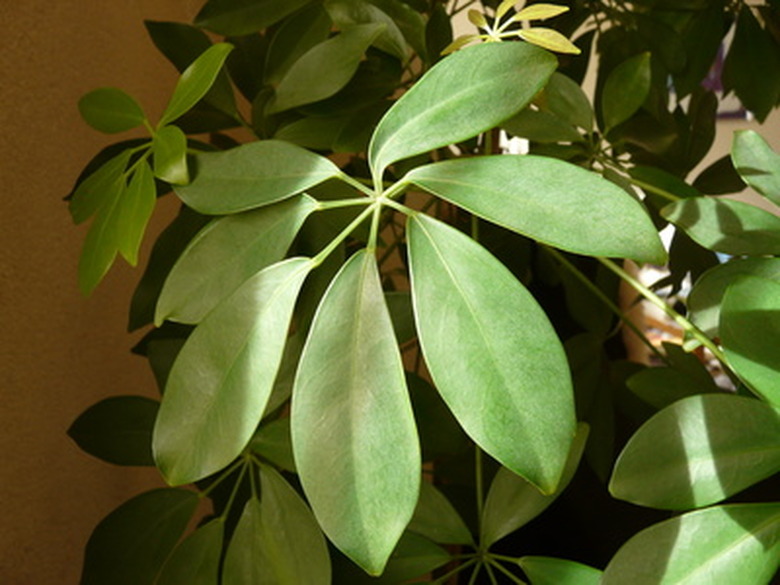Flower Leaf Identification
Leaves are distinctive features of annual and perennial flowers and, if you're observant, you can make a good guess as to the identity of the plant. The flowers themselves are the key to solid identification, but if you get to know the leaves of familiar plants you'll be able to recognize them by texture, shade of green and shape. Paying attention to the details is critical.
Main Types
You can divide plants into two main categories by their leaves, monocots and dicots. Monocots, or monocotyledons, have veins that run parallel to each other from the base to the tip of the leaf. Grasses, iris and daylilies are good examples. Dicots, or dicotyledons, have veins that branch out in a network across the surface of the leaf, usually with a central midrib. Maples, sunflowers and geraniums are good examples of this type.
- Leaves are distinctive features of annual and perennial flowers and, if you're observant, you can make a good guess as to the identity of the plant.
- The flowers themselves are the key to solid identification, but if you get to know the leaves of familiar plants you'll be able to recognize them by texture, shade of green and shape.
Shapes
One of the most obvious qualities of a leaf is its shape. An undivided leaf is said to be simple. It may be oval, lobed, round, chordate (like a heart), spear-shaped or palmate (radiating lobes from the base.) Sometimes, plants have compound leaves, divided into separate leaflets. They may be palmately compound or pinnately compound–two rows of leaflets attached to a central midrib. Sometimes, as with ferns, these leaflets are themselves divided into lobes or leaflets.
Stem
Each leaf or leaflet is attached to either the base of the plant or the stem, and how it is attached is important to note. Many leaves have a petiole, a short stem, that connects it to a stem and leaves may be opposite to each other along the stem or in a whorl of three or more leaves. If there is no petiole, it is called a sessile leaf. Feel the stem with your fingers. If it seems four-sided, you probably have a member of the mint family. Note also the color and texture, whether it is rough or smooth, hairy or bumpy.
- One of the most obvious qualities of a leaf is its shape.
- Many leaves have a petiole, a short stem, that connects it to a stem and leaves may be opposite to each other along the stem or in a whorl of three or more leaves.
Leaf Edges
The edges of the leaf may be smooth, called entire, or cut into a pattern typical of that plant. Toothed leaves have edges that are cut in some way, coarsely toothed or finely serrated. Some are wavy, spiny or even doubly toothed. Each is characteristic of a particular plant and allow you to identify it once you know the pattern.
Leaf Surface
Pay attention to the surface of both sides of the leaf, noting whether it is shiny, dull or hairy. It may be smooth or have prominent veining. It's also useful to know if a leaf has an odor when you crush it.
- The edges of the leaf may be smooth, called entire, or cut into a pattern typical of that plant.
The shade of green can also be a useful feature in identification. It may be bright green, deep green, bluish, blackish or reddish. Even the way a leaf reflects light can be telling.
Warning
Never eat any part of a flower relying on leaf identification alone. Many unrelated plants have similar leaves, and poisonous flowers can only be truly recognized in bloom.
